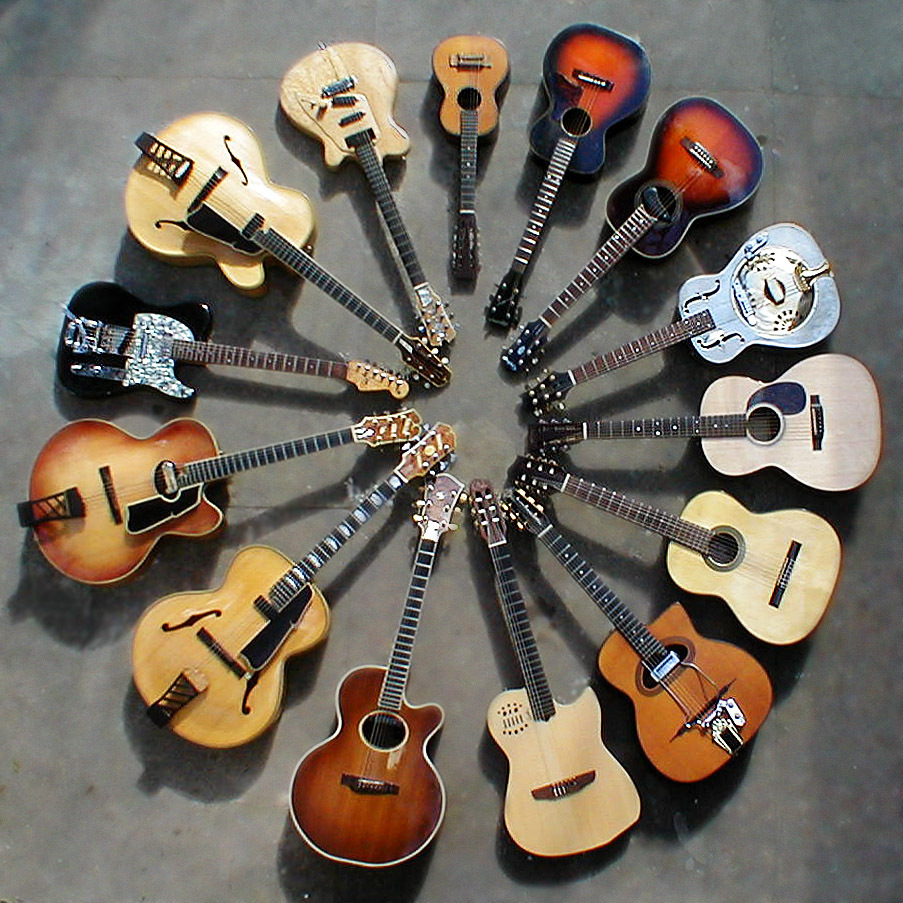
When students ask me about new instruments, it’s often something like…
“What guitar is right for this genre?”
or…
“What guitar will help me play like [insert artist name]?”
Although there are better guitars for certain styles and genres, when starting out, the crucial point to consider before buying is….
Playability
New students (I know i did this when I started), will often complain about their hands hurting and the strings cutting into their fingers. But these issues are easily avoided with the RIGHT guitar; one that is EASY to play.
More than anything else, an unplayable guitar will kill your motivation to learn and any love you could’ve had for the instrument. For this reasons (and some I’ll mention bellow) my #1 suggestion for best guitar to start on is…
#1 Classical Guitar
The classical guitar takes the cake form this guitar teacher. It’s a gorgeous sounding instrument, very forgiving on mistakes, and much easier to play than an acoustic and many electric guitars.
The main reason: Nylon Strings
These strings are warm and full sounding, which encourages students to practice, and they are soft and silky, saving finger tips the pain of steel acoustic strings.
And in 14 years of teaching I’ve learned an important lesson myself; students who are in pain are less likely to play and practice!
Best for Younger Students
Imagine running with shoes that are 5 sizes too big for you. This is what it’s like playing a guitar too big for you. Most all my students 12 and younger start on a 3/4 classical guitar, something like the Yamaha CGS103A. Not only is the size great, the soft nylon strigns will also be easier to play if the guitar is poorly set up, saving you the extra $50+ it could take to set it up.
Just like anything though, there are downsides or exceptions. For one, the classical guitar isn’t fit for many modern techniques and styles like bends and tapping, and for playing in a band they are often too warm and sound muddy. So lets look at some good Acoustic and Electric options to.
#2 Acoustic Guitar
I often have a lot of students upgrade to this model after the Yamaha CGS103A (usually between 14-15 years old). Because of it’s slim body, the Fender CC-60SCE is great for both young and older students. It’s also very affordable and delivers great tone for the price (many cheap acoustics can sound harsh and thin).
This option comes second to the Classical Guitar primarily because of the strings. Like I mentioned before, steel strings are tough and often cut into the fingers when not set up properly. And since the string create more tension, without a professional set up, many of them are unplayable, and can lead to complications in the hands down the road.
#3 Electric Guitar
As affordable guitars go, the Squire Telecaster Thinline is a great and fun choice. The dual humbuckers (hum cancelling pickups) are very versatile and warm. And the size and weight is great for beginners, even younger students. Pair this with a Positive Grid Spark Go and you have a killer unbeatable combo.
If we consider playability alone, this option would be almost tied with the Classical Guitar. The strings are generally thinner than acoustic guitars and so are easier on the fingers. But when you add the cost of the amp and cables (usually $200+), this becomes a very expensive option. Sure, you could go with a beginner pack like Squire and other companies offer, but these are usually poorly made and will breakdown quickly. Setting up an electric guitar is much easier than an acoustic, but can be complicated for a beginner to figure out. For these reasons I’d still start on a classical
Wildcard Suggestion: Ukulele
If after all you would prefer to be more frugal, I’d suggest learning on a ukulele.
It’s no high voltage lead guitar, but it’s a very affordable and fun instrument to start on, and what you learn translate onto guitar very easily. As it is, the first lesson I teach to my beginner guitarists is how to play ukulele chords on the guitar, since the shapes are all the same (though the chord names change between the two).
Whichever option you go with, let this article guide your fingers, and your wallet, towards an easier and more enjoyable beginning to your music learning!
If you still need help choosing an instrument hit me up! I’ll throw in a free lesson!
